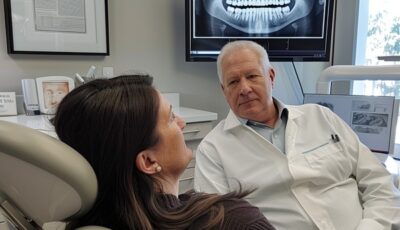
According to the definition, radiologists are medical professionals who make use of the use of x-rays as well as other imaging methods to diagnose and detect illness. The symptoms of their patients and diagnoses can often help doctors and primary healthcare providers decide on the type of medical imaging research to conduct.
Medical imaging technologists apply their technical expertise and knowledge of human anatomy to take precise photographs of certain parts of patients’ bodies, allowing medical professionals to assess those parts for disease thoroughly. To provide the best patient care, radiologists evaluate the images and report for referring clinicians such as pediatricians, surgeons, doctors, obstetricians, and internists.
Diagnostic Imaging Methods
Radiology is a field of medical science that is highly crucial in various medical fields, like surgery, pediatrics, obstetrics, cancer care, trauma response emergency medicine, treatment for infectious diseases, and many more. Below are a few of the most popular imaging diagnostic procedures utilized in medical procedures.
1. X-Ray Imaging
Imaging using X-rays is the most widely used method for radiology imaging. A small amount of x rays are administered to a particular body part to produce an image called a radiograph. If utilized by radiologists and technologists with the proper training, the X-rays are usually safe.
X-rays can be used to identify fractures. They are also used to examine the different body parts that require examination, like the chest, the abdomen, and the superficial soft tissues. They are an efficient and straightforward method for your doctor to diagnose different diseases in the body. If you ought to learn more about expert screening and diagnosis, you can visit websites like ausrad.com and read blog posts and articles from expert radiologists.
2. Ultrasound
Sonography employs sound waves that are transmitted into the body. A transducer refracts these to generate an electrical signal that is later used to produce a visual. The technique generates a live-feed video without radiation.
Doctors often use sonography to observe fetal growth and development. If a patient is experiencing discomfort, swelling, or the presence of an infection, an ultrasound test could be an effective diagnostic tool. Additionally, medical professionals use ultrasounds to look at the liver, kidneys, gallbladder, and heart.
3. Computed Tomography
CT or CAT scan is a kind of medical imaging that uses X-rays. It involves the creation of a sequence of cross-sectional images that can be used to study organs, tissues, and bones more in-depth.
Due to their more detail, computed tomography scans can be more effective than standard radiation. However, these scans require more radiation. CT scans to detect cancer or tumors and internal injuries after an accident. Doctors can use CT scans to monitor a patient’s recovery from an injury to a limb or heart problem.
4. Magnetic Resonance Imaging
MRI utilizes superconducting magnets and radio waves instead of Ionizing radiation. In the case of examining a patient’s ligaments and tendons, as well as soft tissues, or organs, doctors often choose for MRI. Brain MRI can help diagnose various problems, including cancer, stroke, eye illnesses, and even aneurysms.
Heart size, post-heart-attack damage, as well as vascular inflammation are just several of the cardiac diseases that MRI will be able to detect. It can detect breast, ovary, liver, kidney, pancreatic, and other malignancies.
5. Vascular Interventional Radiography
Vascular interventional radiology services enable medical experts to treat various illnesses. They use methods such as angioplasty or thrombolysis and other techniques requiring minimal intervention. CT, ultrasounds, and X-ray fluoroscopy are employed in vascular interventional radiology.
Blood vessel diseases are treatable, problems with blocked or dilated blood vessels can be addressed, benign tumor therapies can be directed, and gallbladder and kidney stones can be removed with the help of vascular interventional radiology.






